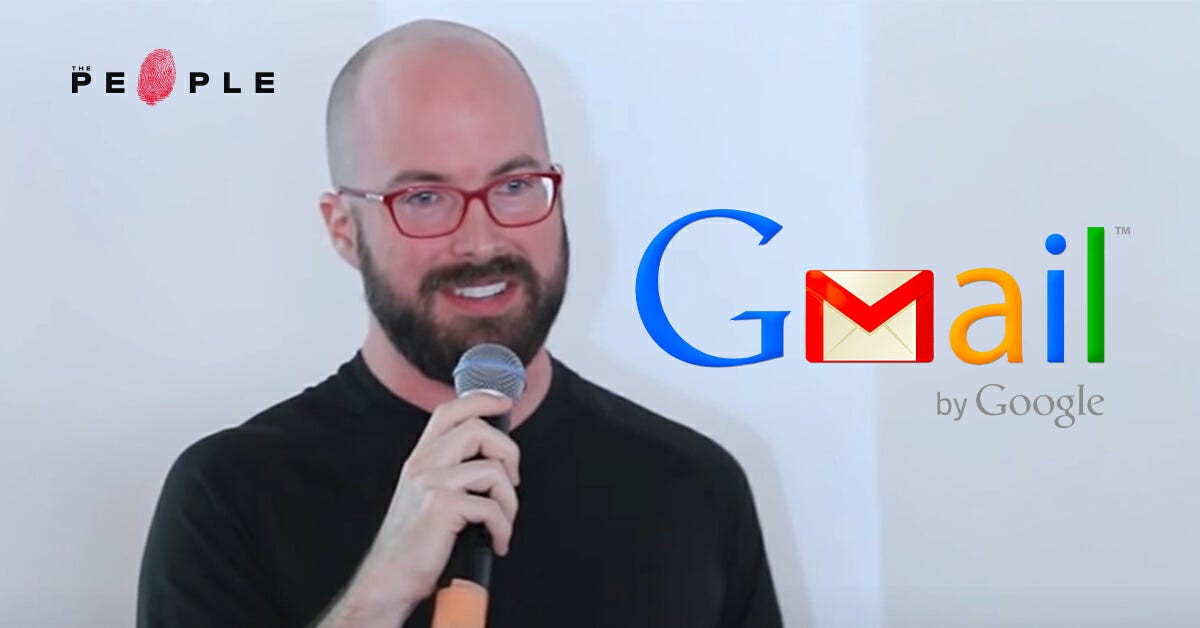Today’s Story: Gmail
Product: Gmail
Creator: Paul Buchheit
Launched: April 1, 2004
Gmail, now one of the most widely used email platforms globally, started as a side project by Paul Buchheit, an engineer and early employee at Google. This innovation grew from a vision to improve email efficiency and accessibility, reshaping how billions manage digital communication today. Behind Gmail’s success lies not just a story of technical achievement but also Buchheit’s legacy of pioneering simplicity, storage, and search in email.
Paul Buchheit: The Innovator Behind Gmail
Paul Buchheit joined Google in 1999 as one of its earliest employees. Known for his forward-thinking approach, Buchheit's philosophy was centered on simplicity, speed, and user satisfaction. He initially worked on several Google products, including AdSense, the ad platform that revolutionized online advertising and became one of Google’s biggest revenue streams. But it was his idea for Gmail, born from Google’s “20% project” initiative, that truly left an indelible mark.
Google’s 20% policy allowed employees to devote a fifth of their work hours to personal passion projects. This autonomy let Buchheit focus on his idea for a new email system in 2001, a time when email was severely limited by low storage and a lack of search functionality. Inspired by the cluttered email systems of the day, Buchheit envisioned a service that combined a large storage capacity with Google’s robust search technology, making it fast and easy to find any email in seconds.
The Development of Gmail: Transforming Email for Everyone
Buchheit started Gmail with a vision for a sleek, streamlined user experience—one that offered not only ample storage but also smart organization. Using Google’s search infrastructure, he crafted Gmail to be fast and efficient, a departure from the frustratingly slow email systems of that era. From the start, he incorporated a key design feature: threaded conversations, which grouped related emails in a single view for easy reading.
Gmail was initially tested within Google and later by friends and family, gaining early fans with its 1 GB storage capacity—an unheard-of amount when competitors like Hotmail and Yahoo Mail provided only a few megabytes. At a time when people routinely deleted emails to free up space, Gmail’s vast storage allowed users to retain their entire email history, fundamentally changing expectations for email storage.
Public Launch and the Impact of the Invite-Only Model
On April 1, 2004, Gmail officially launched in beta, requiring an invitation to join. Many initially thought it was an April Fool’s Day prank because the offering seemed too good to be true: 1 GB of storage, fast search, and an intuitive interface. The invite-only model made Gmail desirable and exclusive, creating demand and word-of-mouth growth as people eagerly sought invites to try out Google’s new email platform.
The ads within Gmail—a unique concept at the time—were another breakthrough that drew from Google’s success with AdWords. Buchheit developed a system to place ads alongside emails that were relevant without being intrusive, marking the start of a sustainable business model for free email services.
Gmail’s Path to Dominance and Constant Innovation
Over the years, Gmail continued to expand, adding features like spam filtering, chat, and Google Drive integration, and kept increasing storage. By the time Gmail exited its beta phase in 2009, it was a global leader in email, celebrated for its simplicity and vast storage.
Gmail also became a gateway for Google to introduce other applications, like Google Workspace, Google Calendar, and Google Meet. In addition, the platform’s cloud-based model laid the foundation for users’ growing trust in online storage, paving the way for an era of cloud computing.
Legacy and Influence: Paul Buchheit’s Vision Lives On
Paul Buchheit’s work on Gmail has left an enduring legacy. Gmail redefined email storage, structure, and usability, influencing countless other email platforms that followed. The threaded conversation model is now standard in most email applications, and Gmail’s focus on storage and ease of access remains a benchmark.
Buchheit’s contributions extend beyond Gmail. He worked on other groundbreaking projects at Google, later became a partner at Y Combinator, and mentored numerous startups. His impact on the tech world is significant not only through Gmail but also as an investor and advocate for young founders. Today, Gmail boasts over 1.5 billion users, making it one of the most popular email services globally.
By transforming a simple side project into a product that redefined digital communication, Buchheit’s work reminds us of the power of pursuing bold, visionary ideas.
To Ship Products or packages to your customers locally or internationally use YD package delivery service
Before you go please check our WhatsApp channel and subscribe here





